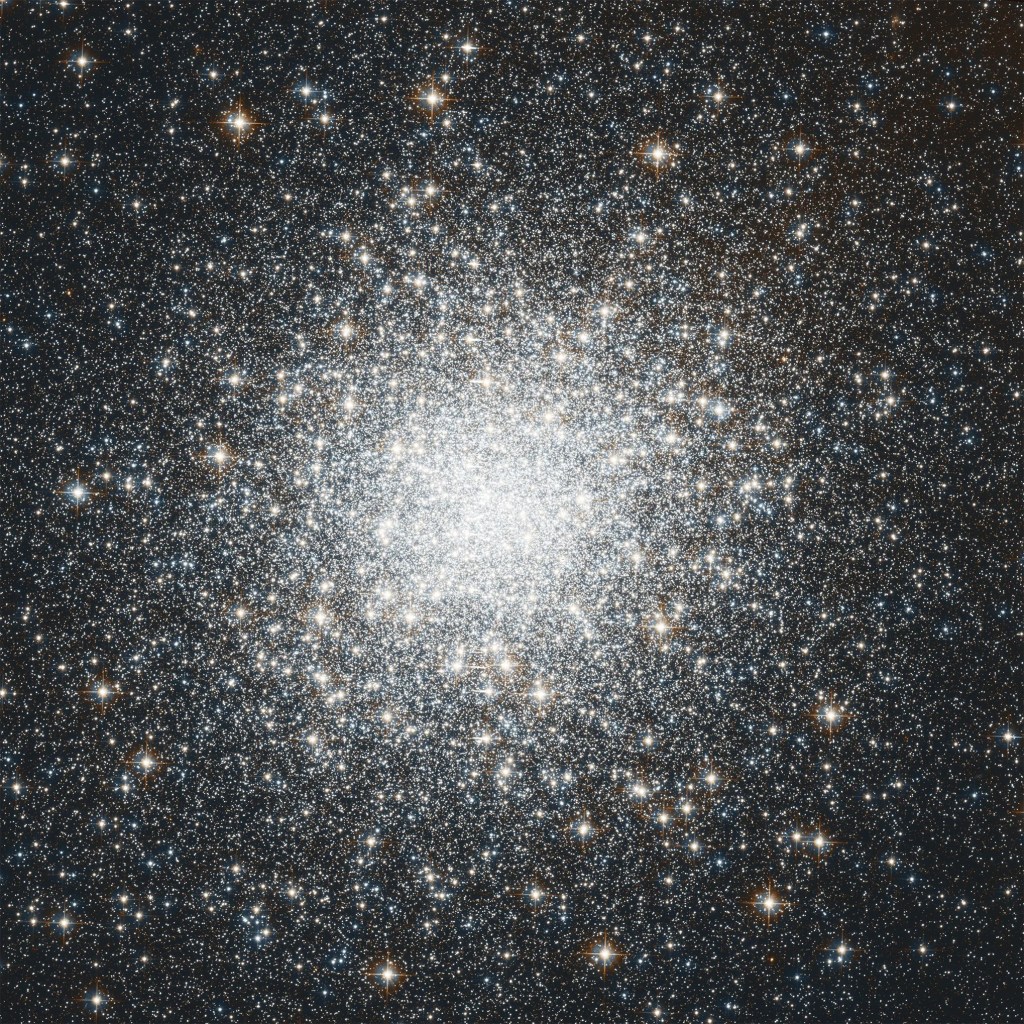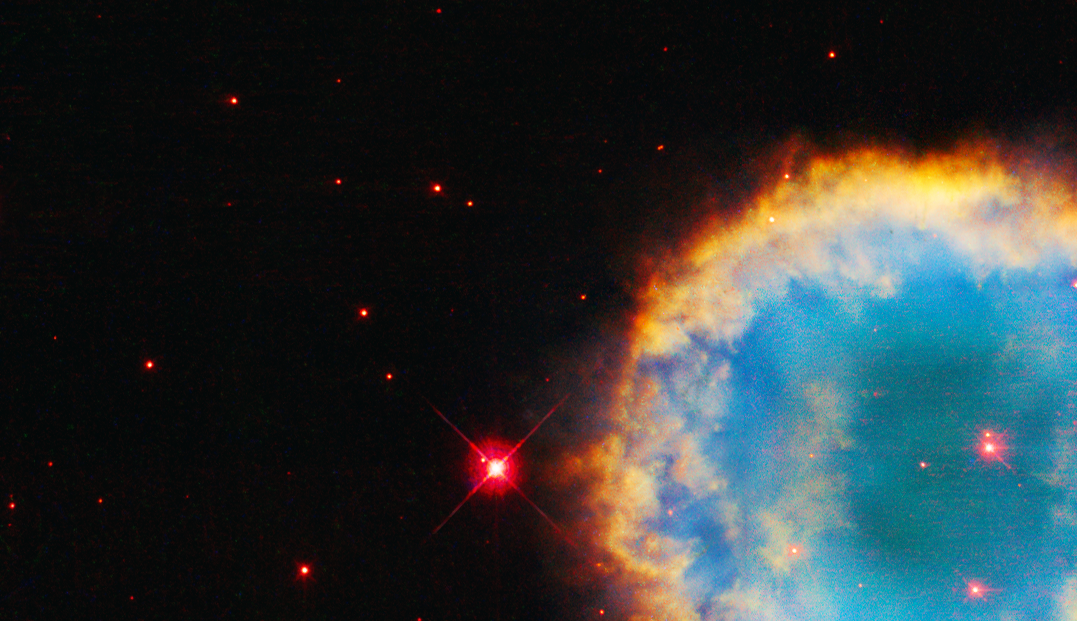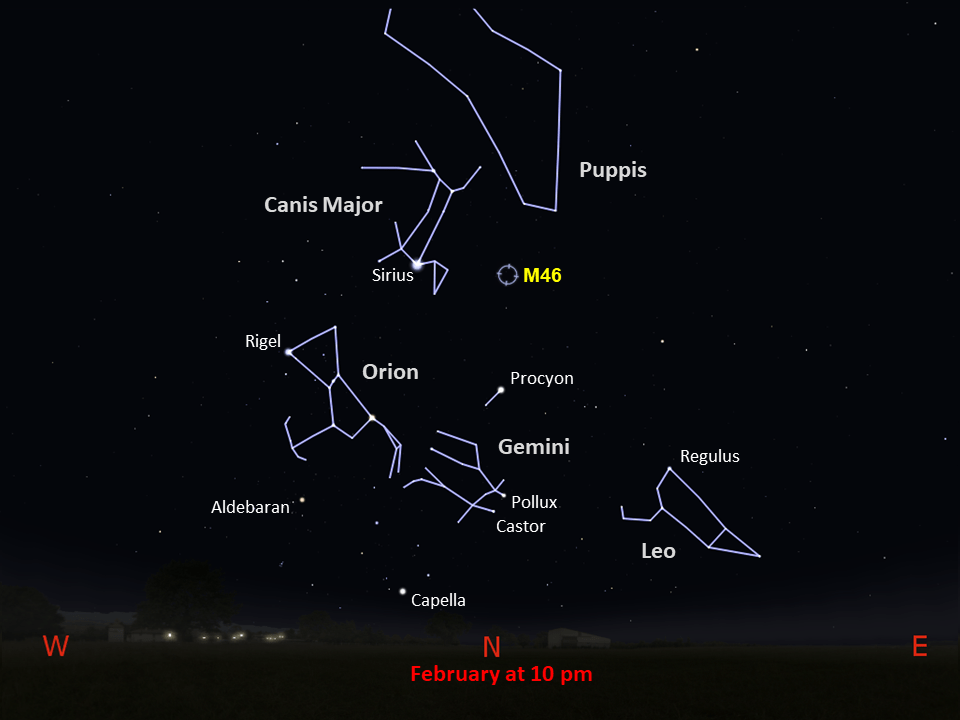Messier 46
Most of the stars in this image are part of the open star cluster, Messier 46. The colorful planetary nebula is located in front of the star cluster.
Distance
5,400 light-years
Apparent Magnitude
10.0
constellation
Puppis
object type
Open Cluster
This NASA Hubble Space Telescope image showcases the planetary nebula NGC 2438, which is located in front of the open star cluster M46 (also known as NGC 2437). Most of the stars in this image are part of M46 and are roughly 5,400 light-years away, 2,400 light years behind the nebula.
M46 is a relatively easy cluster to find in the constellation Puppis. Use the bright star Sirius in the constellation Canis Major as a starting point. M46 is about 14 degrees to the east and ever so slightly north of Sirius. Once you’ve found M46, look for the planetary nebula on the northern edge of the cluster. A telescope fitted with a light-pollution filter will increase the contrast between the 10th magnitude diffuse nebula and the background sky. For those with dark skies, the binocular view of star cluster M46 and nearby clusters M47 and NGC 2423 all in the same field of view forms a spectacular group.
The late 18th century astronomer, William Herschel, first spotted NGC 2438. His son, astronomer John Herschel, described it in 1827 as “exactly round … but a little velvety at the edges…”
NGC 2438 formed during the death of a Sun-like star. As the star began to die, running out of nuclear fuel, it expelled its outer layers of gas into space and created the spherical glowing nebula we see in this Hubble image. The bright point of light at the center of the nebula is a white dwarf, the evolutionary end product of what was once that Sun-like star.
This visible light image was created using Hubble's Wide Field and Planetary Camera 2. The blue color that fills the center of the nebula represents oxygen [O III] and indicates a photoionized state. Green is hydrogen [H-α], orange is nitrogen [N II], and red is sulfur [S II].
For more information on Hubble’s observations of NGC 2348, see:
Explore Hubble's Messier Catalog
The following pages contain some of Hubble’s best images of Messier objects.

Overview The Messier catalog, begun by astronomer Charles Messier in the 18th Century and revised over the years, includes some…

Better known as the Crab Nebula, Charles Messier originally mistook Messier 1 for Halley’s Comet, which inspired him to create…

Hubble's image of Messier 2 is comprised of visible and infrared wavelengths of light.




































